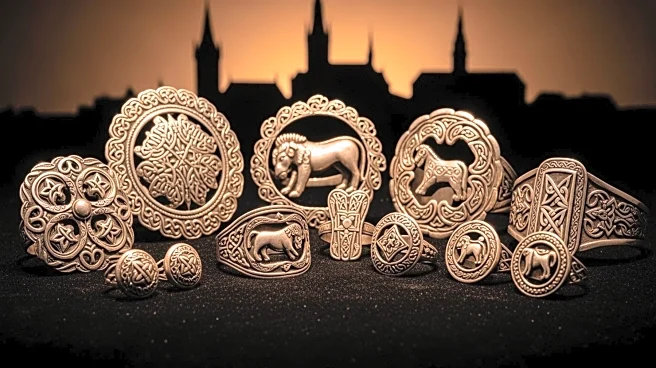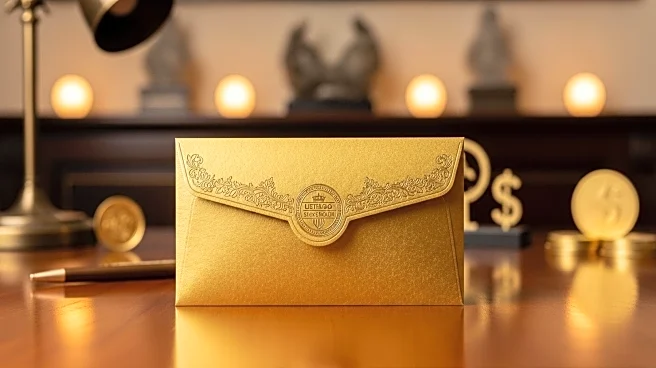What's Happening?
A significant archaeological discovery was made near Stockholm, Sweden, where a local man unearthed a massive hoard of silver coins and jewelry while searching for worms at his summer house. The hoard, weighing 13 pounds, is believed to date back to the early
Middle Ages, specifically the late 12th century, a period marked by regional unrest. The collection includes thousands of silver coins, rings, pendants, and beads, some of which bear references to Knut Eriksson, a 12th-century ruler, and bishop coins minted in the 10th century. The find has been handed over to Stockholm county's administrative board, which is collaborating with local archaeologists to document and investigate the trove. The precise location of the discovery remains undisclosed, pending further examination and potential compensation for the finder under Swedish law.
Why It's Important?
The discovery of this silver hoard is significant as it provides insights into the economic and political landscape of Sweden during the Middle Ages. The coins stamped with references to Knut Eriksson highlight the ruler's efforts to stabilize the region and develop a central bureaucracy, including the minting of coins. Additionally, the presence of bishop coins underscores the religious and economic influence of bishops during that era. This find contributes to the understanding of trade and currency circulation in medieval Europe, offering valuable information to historians and archaeologists. The hoard's preservation and documentation could enhance knowledge of Sweden's historical development and its interactions with neighboring regions.
What's Next?
The Stockholm county's administrative board will continue to work with archaeologists to analyze the hoard and determine its historical significance. The National Heritage Board will assess the find and decide on compensation for the discoverer, as per Swedish law. Further research may reveal more about the socio-political conditions of the time and the reasons behind the hoard's concealment. The findings could lead to additional archaeological investigations in the area, potentially uncovering more artifacts that shed light on Sweden's medieval past.
Beyond the Headlines
This discovery raises questions about the ethical and legal aspects of archaeological finds. The requirement for individuals to offer ancient finds to the state in exchange for payment reflects the balance between private discovery and public heritage preservation. The hoard's concealment during a period of unrest suggests historical parallels with modern practices of safeguarding assets during times of instability. Additionally, the find may influence cultural perceptions of Sweden's medieval history, highlighting the complexity of its economic and religious structures.













